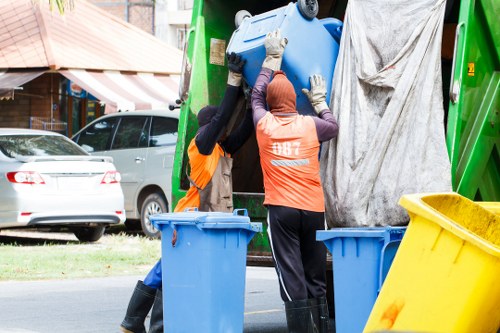Understanding Skip Permits in Temple
Introduction to Skip Permits

In many regions, skip permits are essential for religious institutions, including temples, that engage in various construction and renovation projects. These permits ensure that any development within temple grounds complies with local regulations and preserves the sanctity of the sacred space.
The process of obtaining a skip permit can seem daunting, but it is a crucial step in maintaining the structural integrity and cultural significance of temple properties. By adhering to the necessary guidelines, temples can undertake necessary improvements without legal complications.
Understanding the intricacies of skip permits helps temple administrators streamline their projects, ensuring that renovations or new constructions meet both functional needs and regulatory standards.
Why Skip Permits are Necessary

Skip permits serve as a regulatory measure to oversee construction activities within temple premises. They help prevent unauthorized or unsafe building practices that could compromise the temple's structural soundness and the safety of its visitors.
Compliance with skip permit regulations ensures that all construction work is carried out by qualified professionals who adhere to established safety and quality standards.
Additionally, obtaining a skip permit fosters transparency and accountability, reducing the risk of legal disputes or penalties that may arise from non-compliance.
The Application Process

Applying for a skip permit involves several steps designed to verify the project's scope and its adherence to local building codes.
Step 1: Preparing Documentation
Gather all necessary documents, including architectural plans, site layouts, and detailed project descriptions. These documents provide the reviewing authorities with a clear understanding of the proposed work.
Step 2: Submission of Application
Submit the completed application along with the required fees to the relevant local government office. It's essential to ensure that all information is accurate to avoid delays in the approval process.
Step 3: Review and Approval
Once submitted, the application undergoes a thorough review by municipal officials. They assess the project’s compliance with zoning laws, safety regulations, and cultural preservation standards before granting approval.
Benefits of Obtaining a Skip Permit

Securing a skip permit offers several advantages for temple projects:
- Legal Compliance: Ensures all construction activities are within legal boundaries.
- Safety Assurance: Promotes the use of safe building practices, protecting both workers and visitors.
- Preservation of Heritage: Helps maintain the cultural and historical integrity of temple structures.
Moreover, having a skip permit can enhance the temple's reputation by demonstrating a commitment to responsible and sustainable development.
Common Challenges and Solutions

While the skip permit process is straightforward, several challenges may arise:
- Delays in Approval: Bureaucratic red tape can prolong the approval timeline.
- Incomplete Documentation: Missing or inaccurate documents can lead to rejection of the application.
- Regulatory Changes: Frequent updates in building codes may require adjustments to project plans.
Overcoming Delays
To mitigate delays, temple administrators should engage with local officials early in the process and seek guidance on any specific requirements.
Ensuring Complete Documentation
Double-check all submitted documents for completeness and accuracy. Consulting with professionals who have experience in obtaining skip permits can also be beneficial.
Best Practices for Temple Projects
Implementing best practices can streamline the skip permit process and ensure successful project completion:
- Early Planning: Start the permitting process well in advance of the planned construction.
- Professional Consultation: Work with architects and contractors familiar with local regulations.
- Community Engagement: Involve community members to gain support and address any concerns.
Sustainable Construction
Incorporating sustainable building practices not only aligns with environmental stewardship but may also expedite permit approvals by meeting modern regulatory standards.
Cultural Sensitivity
Respecting the temple's cultural heritage during renovations ensures that the sacredness of the space is maintained for future generations.
Conclusion
Obtaining a skip permit is a fundamental step for any construction or renovation project within temple grounds. It ensures that the sacred space is preserved, safe, and compliant with all regulatory requirements.
By understanding the application process, recognizing the benefits, and addressing common challenges, temple administrators can effectively manage their projects and contribute to the enduring legacy of their religious institutions.
Ready to start your project? Contact us today to navigate the skip permit process with ease and expertise.